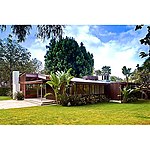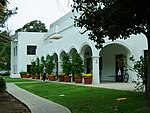Frances Marion Parker (October 11, 1915 – December 17, 1927) was an American child who was abducted and murdered in Los Angeles, California. Her murder was deemed by the Los Angeles Times "the most horrible crime of the 1920s", and at the time was considered the most horrific crime in the history of California. In later decades, Parker's death was the subject of various murder ballads.
Parker went missing on December 15, 1927, after she was dismissed from her classes at Mount Vernon Junior High School in Lafayette Square: an unknown man, posing as an employee of her father, Perry, checked her out of school with the registrar, stating that her father had suffered an accident. The next day, the Parker family received ransom letters demanding $1,500 (equivalent to $23,672 in 2021) in gold. The letters were signed with various titles, including "Fate", "Death", and "The Fox"; and some had words written in Greek.
Following the orders of the ransom, Perry Parker—a bank employee—met his daughter's abductor in central Los Angeles on December 17, 1927. Upon the exchange of the money, the assailant drove away, throwing Marion's mutilated body out of his car as he fled. The child had been significantly disfigured, her limbs cut off, her eyes fixed open with wires, and her abdomen disemboweled and stuffed with rags; her limbs were discovered the next day in Elysian Park.
Parker's murderer was soon identified as William Edward Hickman (born February 1, 1908), a 19-year-old former co-worker of Perry Parker. Law-enforcement officers tracked Hickman throughout the Pacific Northwest over several days, relying on sightings in Albany and Portland, Oregon, and Seattle, Washington, where he paid shop-owners with gold certificates given to him in the ransom. He was arrested in Echo, Oregon, on December 22, 1927, and then extradited to California, where he was convicted of Parker's murder. He made a written confession, in which he explained in detail how he strangled Parker, disarticulated her limbs, and disemboweled her while she was still alive.
Hickman and his defense claimed that he was insane, and that a deity, "Providence", told him to commit the kidnapping and murder. He was one of the first defendants in California to use what was then a new law, which allowed defendants to plead that they were not guilty by reason of insanity. Hickman was convicted of the murder, and sentenced to death. After an unsuccessful appeal, he was executed by hanging at San Quentin State Prison in October 1928. Marion Parker was survived by her parents; elder brother; and twin sister, Marjorie.







